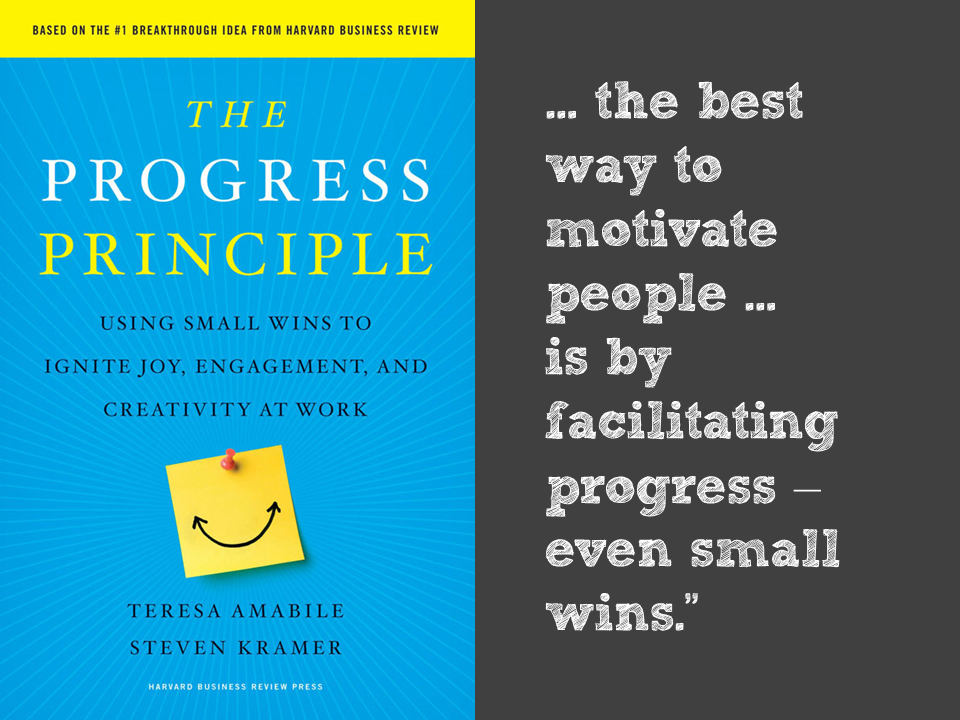When I speak to groups about gamification, I often take a minute to brag about my 83-year-old mom. Over the past 15 years she has had countless (yes, they literally stopped counting) bones broken when she was struck by a car, she has had numerous surgeries from that accident. Then she broke a hip some years later, and then she was hospitalized one more time for dehydration and some other stuff. Despite all of that, and having to learn to walk again several times as a result of the previously mentioned incidents, she asked about a year ago if she too could get a Fitbit tracker like my husband and I had. So, while her goals may be much more modest than most people with fitness trackers, she is the poster child for what can happen when you make progress visible.
The chart above is from her Fitbit dashboard. Her goal at that time was to walk 3,000 steps a day. She has increased her goal over time since she wanted to do this to increase her stamina and because she is really competitive with herself. Before the tracker, like many of us, she could come up with excuses for why she couldn't go out for a walk, despite the fact that she knew she needed to in order to lessen the stiffness and soreness that plague her legs. But it's cold. But it's hot. It's raining. I'm tired. I forgot. I'm sure you could fill in a few more from personal experience, right? But since she started tracking her walking, she HAS NOT MISSED A SINGLE DAY!!! Once she could see the steps showing up on a screen and could see her progress, the excuses evaporated. And she's not alone.
I've seen this happen, time and time again, not just with fitness tracking, but all sorts of places where progress is made visible. One of my takeaways from almost every session I have ever conducted on gamification, particularly for those in learning professions, has been to find ways to make progress visible. Progress begets progress. Don't believe me. How about the experts.
Whether it is a personal or professional goal, making progress drives us. As Teresa Amabile and Steven Kramer discuss in
The Progress Principle: Using Small Wins to Ignite Joy, Engagement, and Creativity at Work, "of all the positive events that influence inner work life, the single most powerful is progress in meaningful work." All feedback loops are self-reinforcing and the progress loop is no exception. In the book, they are studying managers and teams but the results can assuredly be applied in other context. Another nugget of wisdom in the book is the idea that "When you don’t know what you should be doing, it’s tough to feel good about doing it." Is it any wonder that some students feel a lack of engagement with learning.
If a course isn't laid out with clear goals and objectives and a clear pathway to mastery, a student can easily fall behind to the point of no return. If the small wins aren't there for the viewing, there are missed opportunities to bring the student's attention and interest back. If the student doesn't see how the material is relevant they are aren't going to want to do it. See, there are many ways that this manifests. So what do we do to make things better? Well one, as suggested in The Progress Principle, is to learn from the masters, video game designers. Perhaps more so than almost any other media, they know how to keep people, from novices to experts, hooked with "constant progress indicators and achievement markers." So, repeat after me, "Make. Progress. Visible."
Another day we'll go through some examples of how game progress indicators can be used as examples for learning design ideas, but for today, as some people are still figuring out their new years plans and some others may be starting to teeter on the brink of breaking their resolutions, let's just focus on one thing: find a way to track something you want to do. Just one thing. By commiting to recording information about a goal you have, you can start to see how amazing the impact can be. Try it for at least a few weeks, and it you don't see a noticeable difference, let me know. You can track it on paper or in an app, but not in your head. That doesn't count. It has to be front and center. You have to be able to look at it.
If you decide you want to use an app to track your progress, there are dozen out there, many for specific things like fitness, money, learning a language, etc. If you are a gamer and want to form a new great habit, you may want to try
Habitica (formerly Habit RPG) which truly makes habit forming into a game. Or perhaps a less gameful, but nicely constructed
HabitBull. Both of these apps are free, by the way, so yay, there's a win right there.
I could go on and one, but a number of other people have offered up great lists to help you get started. Check out some of the links below. And if you can get a friend to do the exercise with you, even better.


